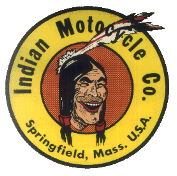Hi Adey. ooh, this could stir up a bit of a debate.
I think it may be a really good idea, you are the guinea pig. I would love to be trying that, got 4 101s back on the road in the last year for other people, I,ve still only got the rat rod race bike running, hope to have another 101 on the road this fall.
I know a lot of vintage car guys do that, there is a really good write up on the pros and cons ( lots of pros, not many cons) in one of the pre war MG car club pages, I will see if I can hunt it down.
I suspect that a lot of the overheating and hi fuel usage we get compared to "back in the day" is down to using a higher octane fuel than the motors were designed for or was available 80 or 90 years ago, with the resultant incomplete combustion of modern fuels causing various side effects, like unburnt fuel combusting in the exhaust port and pipe. Using a basic reverse comparison which may not be appropriate, simplified for me, to get more top end power and speed out of a motor, you raise the compression ratio, raise the octane and advance the spark. Our old sidevalves run at around 5:1 compression ratio. If you were running , say for example, an OHV JA Prestwich 500cc single with around 7.5:1 ration on 85 octane fuel and you wanted to go WAY quicker, you could raise your compression ratio as hi as maybe 14 or 15 :1, fill it up with methanol ( much higher octane rating), advance the igntion a good bit, and go really quickly. Of course you may be rebuilding you motor after a few hours of running, but hey ho. So, lowering the octane rating by adding a proportion of kerosene ( paraffin in other parts of the world) may well enable you to match the burn characteristics of our low compression motors with the standard spark timing, and hey presto, a cooler running bike that uses less fuel. You could say that effectively we may be running our motors a touch retarded, but it ain't as simple as that.
Cliff and Roy Arthur in the UK run their Indians ( and a whole hatful of other first world war era bikes ) on petrol with a little diesel in it, largely because they get it free. They do an approximate specific gravity test , ( looks about right, lets add a bit more gas, near enough ) and their motors really like it. They do smoke a little on occasion particularly on start up, and may need decarbonising slightly more often than other peoples bikes that run on straight gas ( altho probably not as much as the factory riders manual recommends as appropriate for 1928, for example).
I had a long discussion with a guy in Australia about ten years back about this, can't rememberr his name but he built Prestwich v-twins. He said you could hop up an overhead valve motor and run modern fuels quite well with no apparent adverse effects on engine life, but the sidevalve JAPs, whilst they could be made to go shockingly quickly, seemed to develop overheating issues and become more fragile, so were better from a useability point of view running fairly stock and keroing down the fuel a little.
There is a lot of whatiffery in this post, and obviously they are purely my own personal thoughts, and the 101 Association cannot be held responsible for any wrecked motors caused any experimentation that may be undertaken my members as a result of reading my ramblings, but I would love to hear anyones experiences with actual usage. Adey, get a bit more scientific about it, we want facts, figures, numbers and statistics of performance and mileage please, and if you could throw in any temperature test comparisons of various parts of the motor that would be cool as well. If you can work out a good way to measure oil temperature relative to various running conditions that would be handy too, as I was having a discussion on oils with the tech guy at Morris oils a while back, which stalled out as I could not provide him with sufficient data to look into it . He was really interested too, I like a guy who wants to know.


